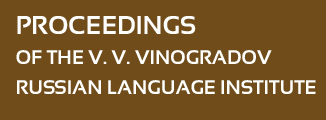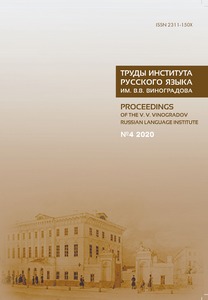STRUCTURE OF METAPHOR AS A FACTOR OF IDIOMS’ SYNTACTIC VARIATION
Abstract:
One of the main factors in the syntactic variation of idioms is their semantic analyzability, that is, the ability of individual components to realize quasi-autonomous meanings. So, the idiom выпустить джинна из бутылки ≈ to let the genie out of the bottle (unlike the idioms дать дуба — lit. “to give the oak” ‘to die’, обвести вокруг пальца ≈ to twist around the finger, заговаривать зубы — lit. “to charm the teeth” ‘to deceive’) is analyzable and allows the use of the type их руками был выпущен из бутылки ядерный джинн “their hands released the nuclear genie from the bottle”, revealing two deviations from the canonical form at the same time: passivation with the transition of the nominal component to the position of the subject and the introduction of the adjective. The purpose of the article is to identify and describe some of the factors inherent in the intuition of native speakers that help determine how independent parts of an idiom are semantically and, consequently, syntactically. The focus is on the influence of the features of the metaphor underlying the idiom on the semantic autonomy of its components. In particular, in the example of выпустить джинна из бутылки ≈ to let the genie out of the bottle, the word джинн ‘genie’ is metaphorically interpreted as a dangerous force that was under control up to a certain point. The ability of speakers to isolate its individual components from a general metaphor, projecting onto them elements of the actual meaning of the idiom, opens up the possibility of their quasi-autonomous use.


